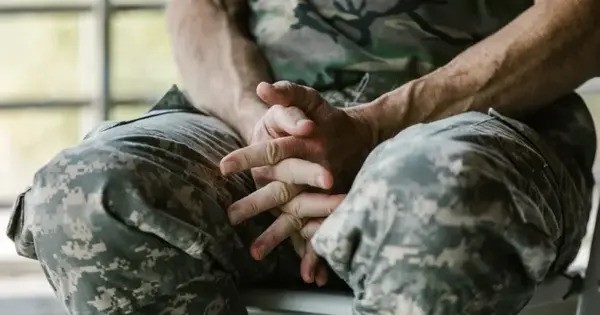A new study sponsored by UCLA Health and the United States Veterans Affairs Office discovered that chronic pain in older persons can be greatly decreased using a newly developed psychotherapy that works by tackling prior trauma and stress-related emotions that can increase pain symptoms.
The study, published in JAMA Network Open, compared a newer therapy called emotional awareness and expression therapy, or EAET, to traditional cognitive behavioral therapy, or CBT, in treating chronic pain as well as mental health symptoms like depression, anxiety, and post-traumatic stress disorder in older veterans.
The study discovered that 63% of soldiers who received EAET reported at least a 30% reduction in pain — a clinically meaningful reduction — after treatment, compared to only 17% of veterans who received cognitive behavioral therapy. Six months following treatment, 41% of EAET participants reported continued pain relief, compared to 14% of CBT patients. Furthermore, EAET patients reported greater success in managing anxiety, sadness, PTSD, and life satisfaction.
Most people with chronic pain don’t consider psychotherapy at all. They’re thinking along the lines of medications, injections, sometimes surgery or bodily treatments like physical therapy. Psychotherapy is an evidence-based treatment for chronic pain. What this study adds is that the type of psychotherapy matters.
Brandon Yarns
“Most people with chronic pain don’t consider psychotherapy at all. They’re thinking along the lines of medications, injections, sometimes surgery or bodily treatments like physical therapy,” said lead author Brandon Yarns, an assistant professor at UCLA Health’s Department of Psychiatry and Biobehavioral Sciences and psychiatrist at the Veteran’s Affairs Greater Los Angeles. “Psychotherapy is an evidence-based treatment for chronic pain. What this study adds is that the type of psychotherapy matters.”
Cognitive behavioral therapy has long been considered the “gold standard” for psychosocial treatment of chronic pain in veterans, according to Yarns. However, studies have indicated that CBT has only minor pain-relieving advantages. Chronic pain sufferers receive a therapy package that includes exercises similar to those used to treat depression or anxiety, such as guided imagery, muscle relaxation, cognitive restructuring, and activity pacing. According to Yarns, the ultimate goal is for patients to improve their pain tolerance.
“The goal in CBT is not necessarily to cure pain but to learn to cope and live well despite chronic pain,” Yarns said. By comparison, EAET has one primary intervention: experiencing, expressing and releasing emotions.

Developed in the 2010s, the therapy tries to demonstrate to patients that stress-related emotions have a major influence on the brain’s experience of pain. Patients are encouraged to focus on a stressful contact, which can range from anything as simple as being cut off by a car to more serious traumas like sexual assault. Yarns stated that the goal is for patients to experience these emotions both mentally and physically. The patients then work to confront these feelings, articulate their reactions, and eventually let go.
“If there is a hurt or stressor people have a series of normal, natural emotional reactions. There might be anger, guilt and sadness. Because these feelings are painful, people often avoid them, but EAET helps people face difficult feelings with honesty and self-compassion,” Yarns said. “In therapy, they can release anger, pain and guilt that they’ve been carrying and are left with self-compassion in the end.”
In the study, researchers recruited 126 veterans — predominantly men — ages 60 to 95 with at least three months of musculoskeletal pain. More than two-thirds of participants had a psychiatric diagnosis, with about one-third having post-traumatic stress disorder. The study was the first full-scale clinical trial of EAET among older adults, older men and veterans, with past studies being largely made up of younger, female participants, Yarns said.
Half of the participants received in-person cognitive behavioral therapy, while the other half received in-person emotional awareness and expression treatment for nine sessions, including one personal session and eight small group sessions.
Patients were asked to rate their pain levels on a 0 to 10 scale on the Brief Pain Inventory before beginning therapy, after nine sessions, and six months later. Following treatment, 63% of EAET participants experienced at least a 30% reduction in pain, compared to 17% of CBT patients.
















